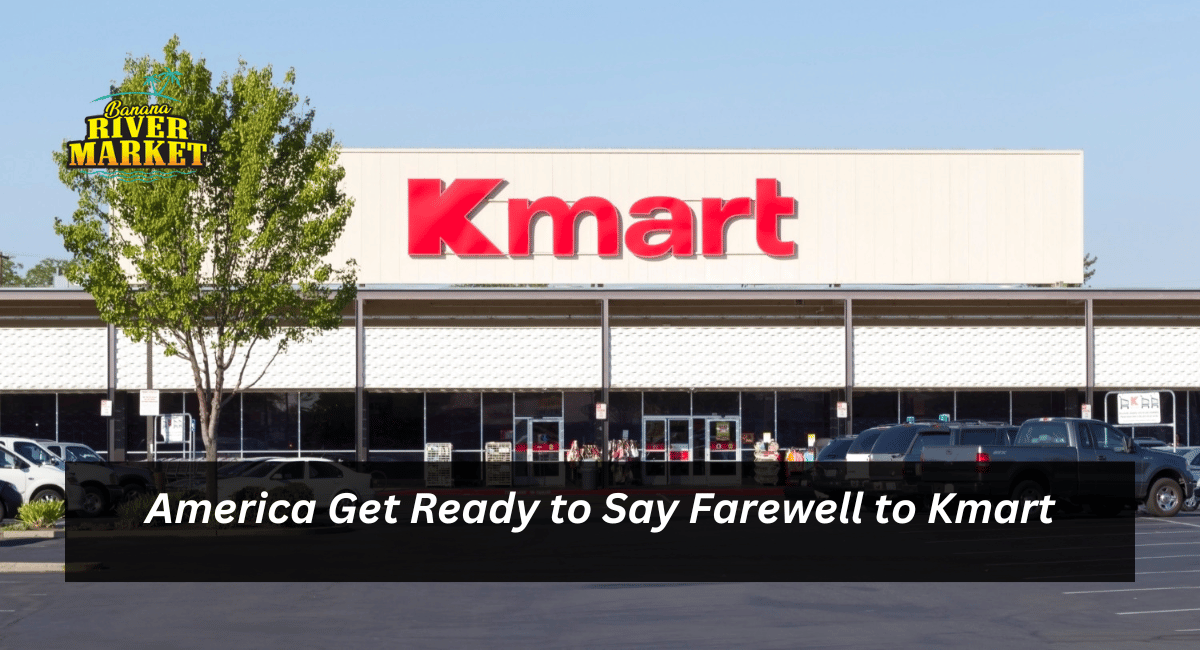This October, America bids farewell to an iconic retail giant as the last full-size Kmart store in the continental U.S. closes its doors. On October 20, 2024, the Kmart in Bridgehampton, New York, will officially shut down, marking the end of a brand that once held a significant place in the hearts of shoppers.
For many, especially millennials who grew up visiting the store with family, Kmart was a staple of the shopping experience.
The Rise of Kmart
Founded in the 1960s, Kmart quickly established itself as a popular department store offering various products at competitive prices. It was not just a shopping destination but a place where customers could discover new products and enjoy a unique retail experience.
Kmart became particularly famous for its exclusive partnerships with celebrities like Martha Stewart, which helped to attract shoppers looking for quality merchandise.
One of Kmart’s most memorable marketing strategies was its “blue light specials.” These flash sales, indicated by a rotating blue light and an announcement over the PA system, created a sense of urgency and excitement among shoppers.
Kmart offered everything from groceries to cosmetics, making it a one-stop shop for families looking to stretch their dollars.
Kmart’s Competitive Edge
At its peak, Kmart was the second-largest retailer in America, trailing only behind Walmart. The company experienced remarkable growth throughout the 1970s and 1980s, driving many smaller chains out of business.
However, the retail landscape was changing, and Kmart faced fierce competition from Walmart and Target.
While Kmart expanded its footprint, Walmart and Target focused on building strong brand identities and enhancing their shopping experiences.
Kmart’s strategy included acquiring other retail chains like The Sports Authority, Borders, and OfficeMax, but these moves often distracted its core business. As a result, Kmart began to lose its competitive edge.
Decline and Fall
As Kmart struggled to maintain its market share, it fell behind in several critical areas, particularly technological advancements. While Walmart and Target invested in their online presence and digital marketing strategies, Kmart failed to keep up.
This lack of innovation hindered the company’s ability to connect with the growing number of consumers who preferred shopping online.
Furthermore, Kmart faced ongoing issues with its supply chain management, which impacted inventory availability and profitability. In the early 2000s, the company’s acquisition by a hedge fund exacerbated its troubles.
The new owners focused on selling Kmart’s valuable real estate rather than investing in the stores. This shift in strategy marked the beginning of Kmart’s decline.
The competitive landscape became increasingly challenging for Kmart. As Walmart continued to offer lower prices and Target became known for its trendy merchandise, Kmart found itself without a distinct niche.
The once-popular store that offered a blend of affordability and quality lost its appeal as shoppers gravitated towards competitors who better met their needs.
The Last Stand
Bridgehampton’s Kmart is the last full-size store in the continental United States. However, there is still a small-format Kmart in Miami.
Additionally, Kmart maintains a presence in Guam and the U.S. Virgin Islands, where stores have not announced any closure plans. Interestingly, Kmart in Guam has performed well over the years, enjoying popularity due to the lack of local competition.
As the Bridgehampton store prepares to close, reports suggest that the location will soon be transformed into a Target, highlighting the shifting retail landscape.
The once-proud brand has become a nostalgic memory for many Americans who fondly recall their shopping experiences.
What Went Wrong?
Kmart’s downfall can be attributed to several factors:
- Failure to Innovate: Kmart was slow to adopt new technologies and failed to build a robust online presence. As consumer preferences shifted towards online shopping, Kmart struggled to keep pace.
- Mismanagement of Resources: The company’s focus on acquisitions instead of investing in its core business diluted its brand identity. Missteps in supply chain management further compounded the issues.
- Changing Consumer Preferences: As Walmart and Target modernized their offerings, Kmart failed to differentiate itself, leaving it vulnerable to competition.
- Focus on Real Estate Over Retail: The hedge fund’s prioritization of real estate assets over store improvements ultimately hurt the brand’s reputation and viability.
Kmart’s Legacy
Despite its decline, Kmart remains a part of American retail history. The brand was once synonymous with affordable shopping and family-friendly experiences. Many customers remember Kmart for its unique offerings and the sense of discovery it provides.
As Kmart prepares to close its final full-size store, it reminds us of the ever-changing retail landscape. Consumers today expect convenience, value, and a shopping experience that meets their needs, and many brands have successfully adapted to these changes.
Kmart’s failure to do so highlights the importance of innovation and adaptability in a rapidly evolving marketplace.
Looking Forward
As we say goodbye to Kmart, we must recognize the lessons learned from its rise and fall.
Retailers must continuously evolve to meet customer expectations, embrace technological advancements, and create a unique shopping experience that resonates with consumers.
The closing of Kmart marks the end of an era, but it also opens the door for new retail opportunities. The landscape will continue to shift, and seeing how other brands respond to the challenges and opportunities ahead will be fascinating.
Conclusion
The closing of the last full-size Kmart in Bridgehampton is a poignant moment for many who remember the store as a significant part of their shopping experiences.
While Kmart may be leaving the continental U.S., its legacy will live on in the memories of shoppers who cherished their time there. As the retail industry continues to evolve, we can only hope that future brands learn from Kmart’s story and strive to create experiences that resonate with consumers in meaningful ways.
READ MORE: McDonald’s Fans ‘Not Happy’ After Highly-Anticipated Menu Item Return

